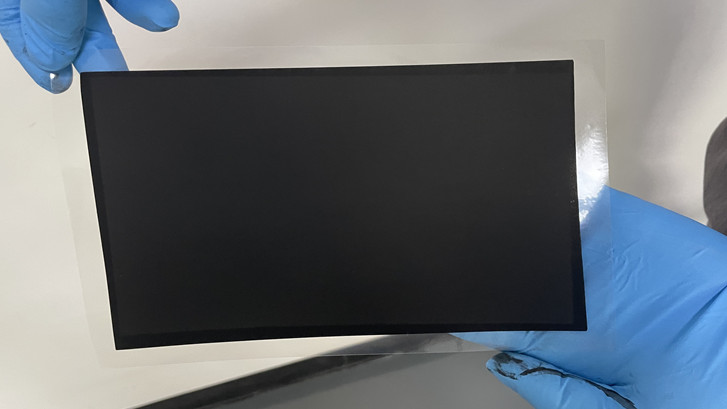Direct Methanol Fuel Cells
Direct Methanol Fuel Cells – Coated Membranes – Cheersonic
Direct methanol fuel cells (DMFCs) have recently received lots of attention due to their high-energy density and their low emission of pollutants. Naion, a commercially proton-conducting polymer membrane has been used in DMFCs, because this perfluorinated ionomer membrane has excellent chemical, mechanical and electrochemical properties as well as high proton conductivity at ambient temperature and high humidity condition. However, its high methanol permeabilities restrict its capability to be used in DMFCs. The methanol permeation not only causes loss of fuel but also forms a mixed potential at the cathode and leads to a lower electrochemical performance.

Cheersonic’s fuel cell catalyst coating systems are uniquely suited for these challenging applications by creating highly uniform, repeatable, and durable coatings. Using the company’s patented ultrasonic spray head technology, it can spray uniformly and efficiently on proton exchange membranes and gas diffusion layers. Uniform catalyst coatings are deposited onto PEM fuel cells, GDLs, electrodes, various electrolyte membranes, and solid oxide fuel cells with suspensions containing carbon black inks, PTFE binder, ceramic slurries, platinum and other precious metals. Other metal alloys, including Platinum, Nickel, Ir, and Ru-based fuel cell catalyst coatings of metal oxide suspensions can be sprayed using ultrasonics for manufacturing PEM fuel cells, polymer electrolyte membrane (PEM) electrolyzer, DMFCs (Direct Methanol Fuel Cells) and SOFCs (Solid Oxide Fuel Cells) to create maximum load and high cell efficiency.
The advantages of ultrasonic spraying include:
1.Highly controllable spray that produces reliable, consistent results.
2.Ultra-low flow rate capabilities, intermittent or continuous.
3.Ultrasonic vibrations continuously break up agglomerated particles and keep them evenly dispersed; maximizing platinum utilization.
4.Corrosion-resistant titanium and stainless steel construction
5.The self-cleaning function of the ultrasonic nozzle prevents clogging.
6.The platform takes up less space.
7.80% reduction in paint consumption
8.The particle diameter is optional which can more flexibly affect the through-hole property of the coating

